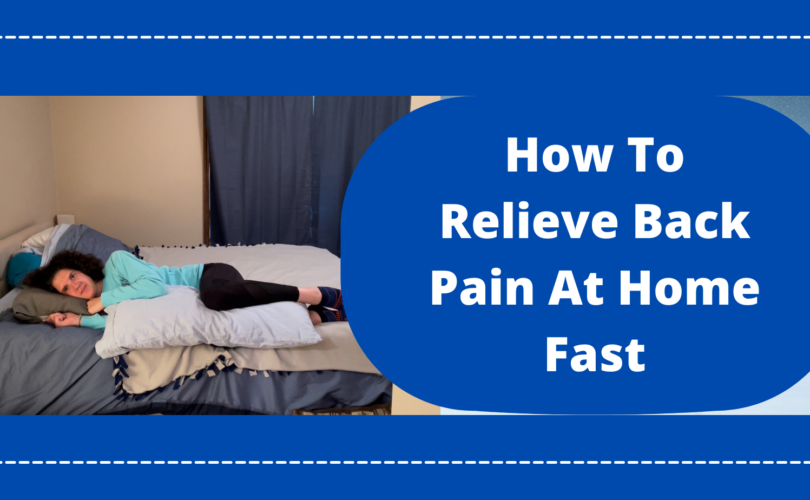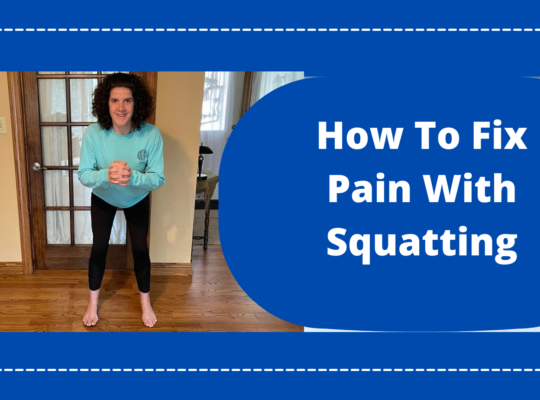How many times have you said, “I threw out my back again.” It happens to the best of us and is very common, so you’re not alone. Most of the time it occurs because we have overstrained tissues in the low back by either doing too strenuous of a workout, moving in a way that we don’t normally move, performing heavier household chores or yard work, or lifting something heavy. It can happen suddenly or with repetitive motions over time.
So what do you do about it? These are the considerations for how to treat your back pain fast at home.
- What to Avoid After An Injury
- How To Position Yourself To Help Healing
- What Should I Do?
- How To Know When To See Someone
What to Avoid After An Injury
Most new back injuries are the result of a quick, traumatic experience or impact that results in strain or tearing to the muscle, disc, or small ligaments in the back. It usually involves immediate pain, swelling, and stiffness. These are warning signs that the tissues have been pushed too far.
1. Don’t panic.
Most back pain completely resolves on its own in less than 6 weeks. Most of the time imaging is not needed, unless the injury resulted from severe trauma like a fall. Injuries can be painful, but the good news is that our bodies are great at healing themselves. In the first minutes to hours after injury, the body is mounting an immune response to help you heal. This is why there can be pain and swelling, and these are good signs that the body is doing its thing to get you better.
Also, increased stress and worry can lead to more muscle tension in the area. So, it’s best to take some deep breaths to decrease strain in the area.
2. Avoid repeating the movement that caused the injury until it calms down.
This usually means avoiding repetitive twisting, lifting, carrying, or bending at the waist. This is usually the way that most of us acquire a back injury. You also shouldn’t sit or stand for a prolonged period. The name of the game is everything in moderation at this point. If you must perform these activities, check out our tips for lifting.
3. Avoid excessive resting.
With extra inflammation on board, you don’t want to be in one spot for too long because it will set up in the area and lead to more stiffness and pain. Movement and using your muscles acts like a pump to keep bringing fresh healing cells to the injured area. This is why bed rest is NOT recommended after an injury. It can lead to increased pain, stiffness, and make it even more difficult to get moving again.
Somewhere in between full activities and couch potato is where you want to land to promote the best healing.
How To Position Yourself To Help Healing
The first thing we want to do after an injury is try to find a position of comfort. Like we said before, we don’t want to stay here, but you can think about it as a home base position. Unfortunately, when we are sleeping, we spend many hours in one position. Here are a few ways to position yourself when sleeping to help decrease strain through the area.
Sitting
While sitting, try to avoid allowing your spine to round forward. This puts extra strain on the discs and back muscles. Get a hand or bath towel and roll it up. Place it at the small of your back and scoot all the way to the back of the chair, keeping your feet flat on the floor. This helps to maintain the normal curves of your back and promotes healing. Make sure to get up often.

Getting In And Out Of Bed
When you have a back injury, you want to avoid performing a sit up when you wake up in the morning. This means we want to avoid you sitting straight up in bed from the lying down position. This causes more stress to the back muscles which attach to the spine. This can delay healing and increase discomfort.
The best way to get in and out of bed is by rolling to your side. When you roll to your side to get out of bed, it helps take stress of your low back and keep your spine in ideal position. When we roll to our side, to sit up you will drop your legs off the side of the bed and push up through your arms. This way you use the weight of your legs and pushing through your arms to make it easier, moving almost like a pendulum and keeping your back straight.
This is the best technique to get into bed as well. Sit on the edge of the bed, lay down on your side, at the same time bringing your legs up to the bed and adjust your pillows.
Lying On Your Back
When laying on your back, try propping up pillows behind your knees so they are bent. This helps to bring your spine into a neutral position and decreases the load through the area.
You can also roll up a small hand towel and place it in the small of your back for extra support if it feels comfortable. This will further help with providing support and alignment.
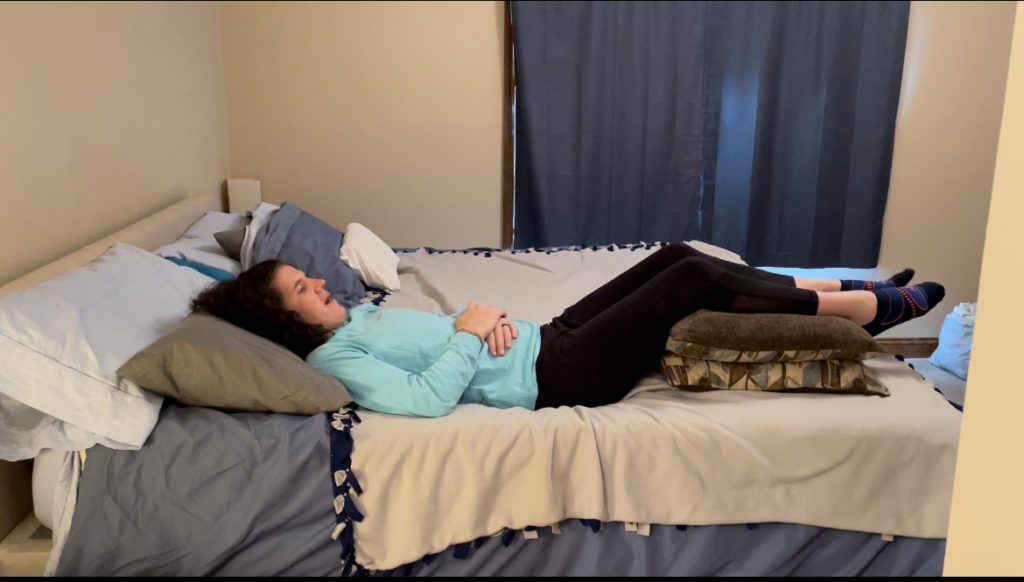
Lying On Your Side
When lying on your side, place a pillow length wise from your knees to under your ankles. This helps to keep the knees from crashing together and takes the strain off of all of the muscles in the hips that attach from the low back. These are often irritated, so this will help to decrease strain.
If you feel you still need more support, you can place a rolled up hand towel on your side. This goes in the space between your ribs and the top of your hip. This helps to keep you from sinking down into the bed and keeps the spine neutral.
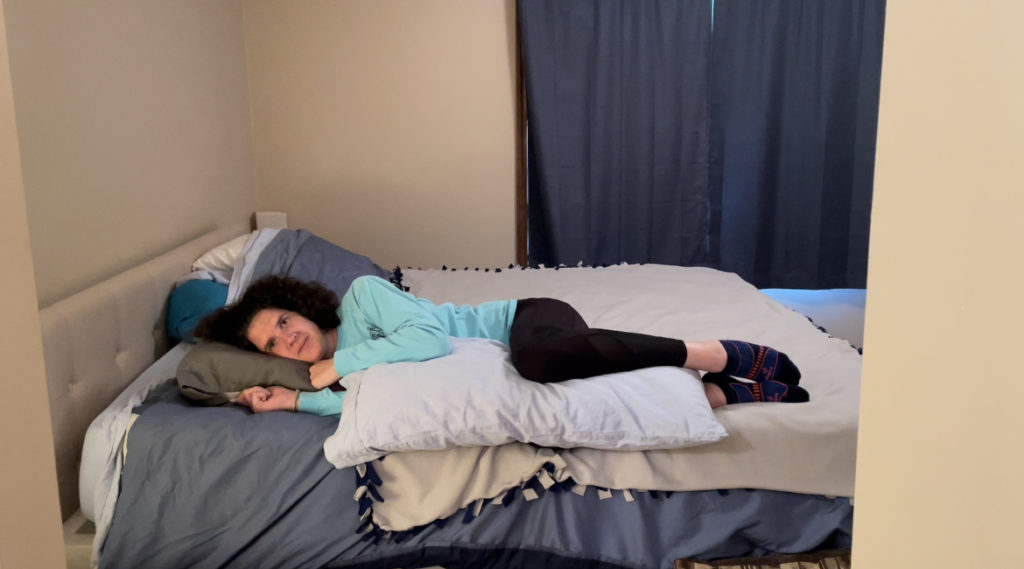
Lying On Your Stomach
While this isn’t a usually recommended position, it can be helpful especially if you are dealing with an irritated disc. You can usually tell this if you injured your back bending and twisting. Also bending forward tends to causes a lot of pain right in the center of your spine.
If this is the case, you can try laying down on your stomach with a pillow underneath your stomach. This will help unload the area. Be sure to position your neck in as neutral position as possible.
Positioning The Neck
We don’t want to forget about the neck. Having a pillow that supports the neck allows it to remain neutral causing less tension elsewhere. This means that your neck isn’t curled into your chest or your head into extension while laying on a pillow. You want to position the pillow right between above your shoulder so that there aren’t gaps and your head is in neutral.
What Should I Do?
Heat or ice? Pain medications? Any exercises?
Heat vs. Ice
There is always a debate as to which is better. The truth is, they both have their place. Learning how to use them properly is key.
Ice can be cold and jarring, and we recommend not using it on bare skin. But it is a good option to help calm down any inflammation and soreness. It also helps to slow nerve conduction, so it can help with pain. It is another way that your body can act as a pump to get the swelling out of the area that is injured. This is why we usually recommend it first.
You only have to use it for 5-10 mins to reach max benefit.
Heat, such as a warmed pad from the microwave, a heating pad or even the hot water from a shower is a way to bring warmth and blood flow to an area of injury. It can help increase flexibility in an area and allow more movement, especially if you are feeling stiff. This which is key when we are injured.
Heat should only be used for 10-15 minutes. Beyond that, you are at increased risk for burns.
Depending on how you are feeling, both of these options can be very useful in helping you feel less stiff, less achy and improve your ability to move.
Medications
While we can’t technically advise on medications, it can be helpful to hold off on using anti-inflammatory medications right at first. This is because these medications decrease the immune response that we need to bring in all of the healing factors. Of course, if you’re in extreme pain, consult with a physician, and always consult with a physician before using new medications.
We hope you find these tips helpful to help manage your own discomfort and injury. However, if you have tried these for a few days and pain does not seem to be improving at all, seek out a movement specialist gain specific insight on your injury.
Exercises
Many of us get angry following an injury because it keeps us from being as productive with our daily chores, but it also keeps us from our usual workouts.
So what exercises can you do safely when you’ve experienced a back flare?
Avoid excessive stretching to the area because stretching lengthens and strains tissues that are healing. Always consult a movement specialist to determine what, if any, stretching is appropriate.
We do recommend at least performing some isometric exercises in the muscles around the low back. Why?
When an injury occurs, your brain stops sending as many messages to the muscles around the area. This is part of the protection response. Studies have shown that this changes our movement patterns and lead to compensations which can have long-term consequences. Isometrics are a safe way to engage muscles without increased strain.
Here are a few to try.
Transverse Abdominis Bracing
While lying on your back or sitting, think about lightly pulling your belly button in toward your spine. You can think of it as gently sucking in. This helps to activate the deeper core muscles and keep them active while you recover.
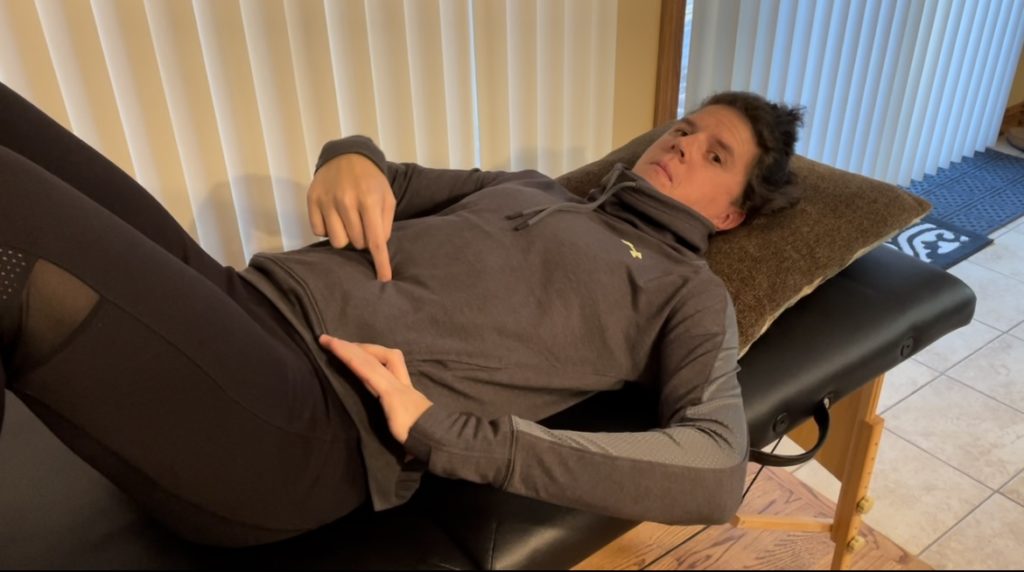
Glute sets
To active your glutes, think about squeezing your bottom together lightly. You can do this in sitting or in standing. For improved activation, keep weight in your heels and press them into the bed or floor.
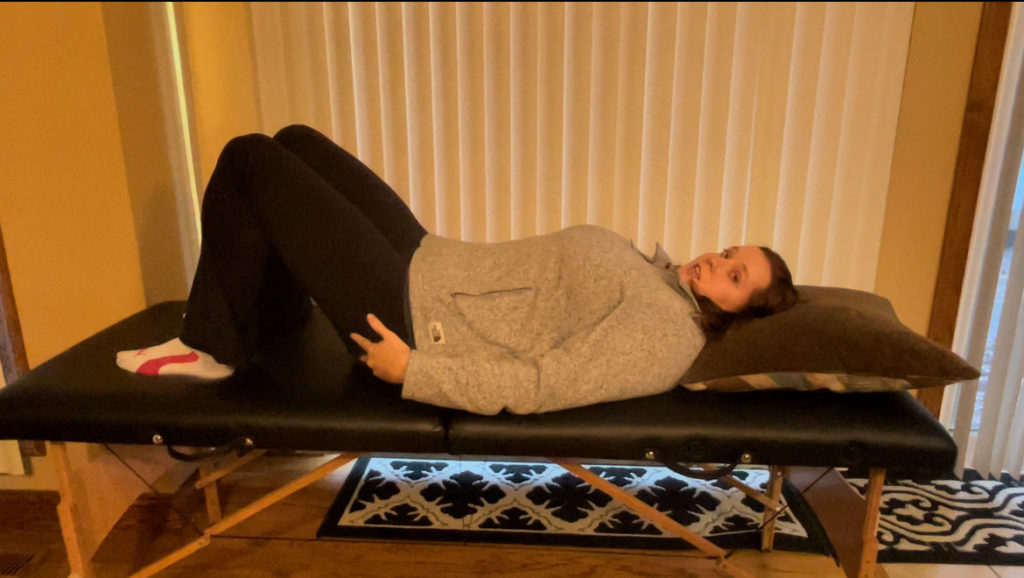
Perform each of these for 10 reps and hold the contraction for 5-10 seconds as long as you do not feel increased pain in your back. If you do, try the exercise again with lighter effort. If that doesn’t work, hold off and consult a movement specialist for a specific assessment and guidance.
How To Know When To See Someone
There are warning signs to look out for with low back pain that signal the problem is an emergency. If you experience any of the following, get a consultation with a physician urgently.
- Sudden pain that does not change in intensity no matter what you do
- Pain that is very severe at night
- Changes with bowel or bladder
- Numbness or tingling between your legs
- Back pain onset is with fever, chills, or night sweats
- It is a result of major trauma, especially in the elderly
If you have questions or concerns or would like to speak to us on the phone to get some answers regarding your back pain, feel free to reach out at any time. We are here for you!
Megan and Ashley
(c) [2021] [Megan and Ashley, Intuitive Choice Physical Therapy and Wellness]

